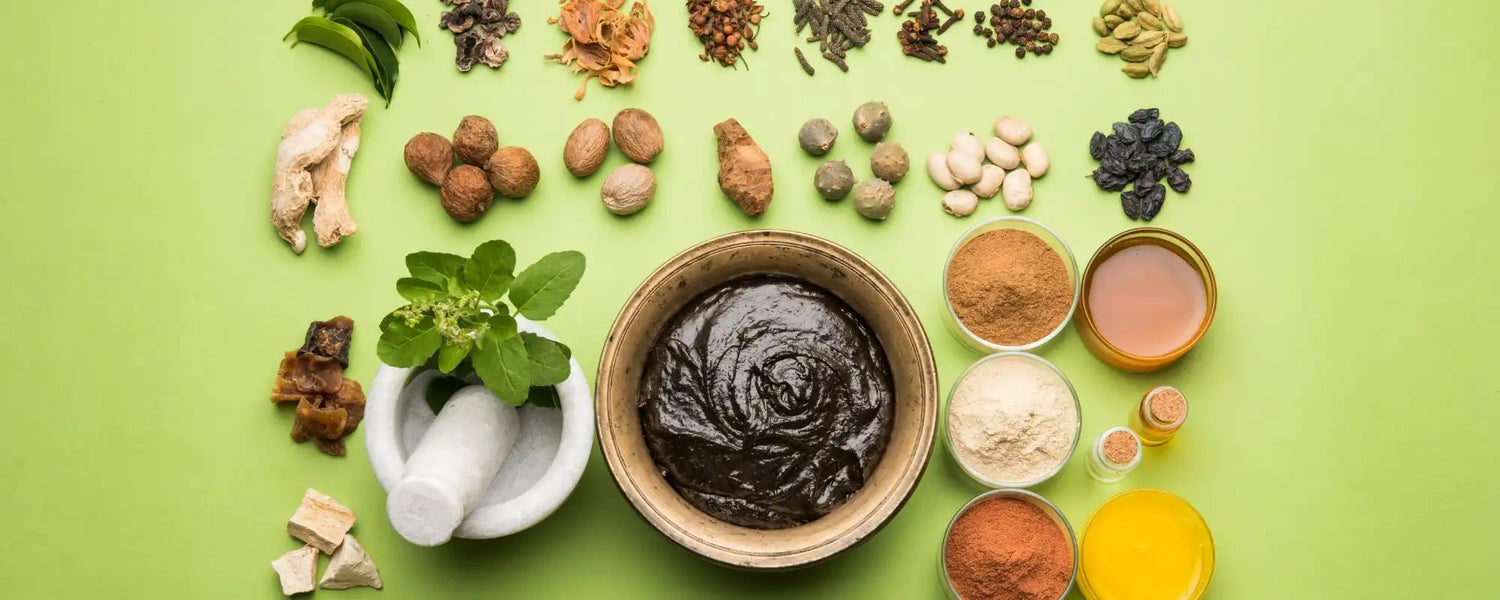Pepper is an exotic climbing perennial plant native to the hottest regions of India and in the central Himalayas. Like like salt, it is such a common spice that it’s likely to be noticed only in its absence from the kitchen or dining table. Although pepper is most valued for cooking, its medicinal qualities far outshine its flavor profile. Throughout India’s long Ayurvedic tradition, pepper has been a widely used, versatile plant, and often prescribed for its healing and balancing effects.
Pepper is mentioned in the Charaka Samhita, the ancient Indian guide to a healthy and balanced way of living. The Charaka Samita is one of two foundational Hindu texts of Ayurvedic teachings that has survived from ancient India. The word “pepper” hails from the word “pippali,” meaning long pepper. The word “pepper” eventually became a generic term to include New World peppers such as red, green, yellow, capsicum, chili, and bell peppers.
Ayurvedic healthcare is based on holism, in which balance is the goal of the practitioner. Using specific herbs, the Ayurvedic doctor aims to restore equilibrium while avoiding side effects. Even more important than the chemical makeup of nature’s plants are their qualities and ability to interact with the human body, mind, and spirit. It’s of utmost importance to support the natural body types (doshas) and bring them into harmony with the universe.

Pepper through an Ayurvedic Lens
According to Ayurveda’s classification, pepper is heavy, slightly oily, and has moisturizing properties. The long pepper is a powerful healing plant with a quick and almost immediate effect after consumption.
Throughout India’s long Ayurvedic tradition, pepper has been a widely used, versatile plant, often prescribed for its healing and balancing effects.

Pepper is known in Ayurvedic medicine to increase internal heat. It has been traditionally used for respiratory diseases, as well as conditions related to intestinal flora. Pepper features cleansing and antioxidant properties, and enhances bioavailability — meaning it helps the body absorb and circulate needed nutrients. Additionally, pepper may help promote the free flow of oxygen to the brain, support digestion and circulation, stimulate the appetite, and support joint health.
The practitioners of the Ayurvedic Clinic BANSKO, Bulgaria, explain that “The peppers of the pippali plant are picked early — when they are not yet ripe and still green in color. This is because at this stage of their development their taste is most intense and they are richest in healing properties. Once harvested, the fruits are dried in the sun until they become gray or almost black in color. Most often they are left intact to preserve their valuable properties.”
Modern scientific research confirms that pepper may offer a number of potentially beneficial properties for the treatment and prevention of colds, cough, laryngitis, bronchitis, and asthma, as well as disorders of the gastrointestinal and circulatory systems, and for conditions such as immune deficiency.
Researchers Hannah R Vasanthi and R.P Parameswari wrote in the journal Current Cardiology Reviews that pepper has an impressive antioxidant and antibacterial effect, and that it may help with digestion and weight loss because it stimulates the breakdown of fat cells. Pepper also may promote “significant protection against” cardiotoxicity (damage to the heart muscle) by virtue of its antioxidant and free-radical scavenging capacity.
The researchers also reported that black pepper influences lipid metabolism (the breakdown of fatty acids), which benefits the heart and blood vessels. Black pepper may have a vasodilating effect in that it increases the blood flow through the arteries and veins that, among other effects, brings more oxygen into the heart, nerves, muscles, lungs, and brain.

Due to the plant’s inherent ability to increase heat, pepper is used to strengthen the Pitta dosha and decrease levels of Vata and Kapha doshas. The Pitta dosha controls digestion, metabolism, and energy production, and those with a predominance of Pitta qualities have a fiery nature. When Pittas are out of balance, they may suffer from skin rashes, burning sensations, peptic ulcers, excessive body heat, heartburn, and indigestion. Therefore, too much pepper will fuel the fire and create an imbalance.
The Chopra Center tells us that the Vata dosha tends to be cold, light, irregular, dry, and always changing. To balance Vata, a person should make choices that encourage warmth, stability, and consistency in his or her life. Pepper is a good addition to the diet to bring needed heat to the mind, spirit, and body.
Kapha types, when out of balance, often become overweight, sleep excessively, and suffer from asthma, diabetes, and depression. Because Kapha is inherently cold, heavy, and dense, the key to balancing Kapha is stimulation, which is why pepper, as well as cayenne, mustard seed, and ginger, is so commonly prescribed by Ayurvedic doctors.
The lesson of pepper and its amazing health benefits is but one example of how we must look deeper into the qualities of nature’s foods. What may appear to be no more than a spice to jazz up your dinner is actually a food capable of restoring health by balancing the doshas and supporting the body’s natural systems of metabolism, detoxification, circulation, and nerve transmission. Pepper seems to represent the Ayurvedic philosophy that the value of nature’s foods lies beneath the surface, there for those who understand how to appreciate it.





